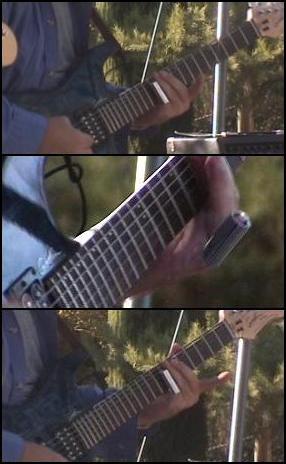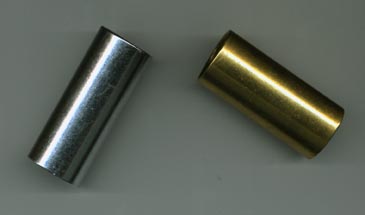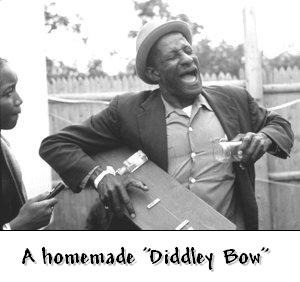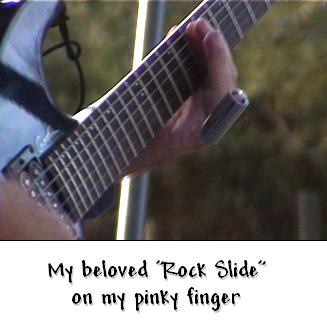
Nothin' but the Blues
America's truly original music form
Get answers to questions about the Blues
Learn interesting stuff about Blues performers
Discover some great Blues CDs you can buy (not from me)
Check out "The Bluez Projekt" (my own blues recordings)
Learn about Open-G tuning, Open-E tuning and Slide guitar
See what happy readers say about these blues pages
Find links to other Blues-related resources

 What exactly is Open-G tuning?
What exactly is Open-G tuning? "Slide guitar" refers to the use of a cylindrical tube (or "slide"), usually
made of glass or metal, which is placed over one finger. Instead of pressing strings
down at various frets, the slide is placed in contact with the strings very
gently, without pushing the strings down into the frets. The slide is moved
up and down the length of the strings to change the notes, always gently
touching the strings.
"Slide guitar" refers to the use of a cylindrical tube (or "slide"), usually
made of glass or metal, which is placed over one finger. Instead of pressing strings
down at various frets, the slide is placed in contact with the strings very
gently, without pushing the strings down into the frets. The slide is moved
up and down the length of the strings to change the notes, always gently
touching the strings.
 The earliest use of the slide did not actually occur on the guitar, but rather,
on the "diddley bow". This crude, one-stringed instrument was literally made
from whatever junk was laying around, like wood scraps, a long wire, nails,
and a broken-off bottle neck to use as a slide. This single-note instrument
dates back to the earliest days of blues, especially for those too poor to buy
a guitar. Without any frets to use as a visual guide, it was actually pretty
hard to play a "diddley-bow", but when it was played by a master, the amazing
sound was both haunting and eerie. To hear a sample, click
here.
The earliest use of the slide did not actually occur on the guitar, but rather,
on the "diddley bow". This crude, one-stringed instrument was literally made
from whatever junk was laying around, like wood scraps, a long wire, nails,
and a broken-off bottle neck to use as a slide. This single-note instrument
dates back to the earliest days of blues, especially for those too poor to buy
a guitar. Without any frets to use as a visual guide, it was actually pretty
hard to play a "diddley-bow", but when it was played by a master, the amazing
sound was both haunting and eerie. To hear a sample, click
here.
 I had to experiment to find the slide I liked best. In the process, I bought a bunch
of slides that were overpriced, fit poorly, and sounded like crap. I then found the
slide of my dreams, the magnificent "Rock Slide".
This machine-crafted slide is the result of computer-aided design (CAD) and precision
machining. It is designed to fit the finger perfectly without slipping off or pinching.
It also has mass added on the inside to increase the output. I bought the medium size
chrome slide (for use on my pinky finger), and I have never used any of the other
slides since! By the way, the "Rock Slide"
cost me less than the crappy ones it replaced...
I had to experiment to find the slide I liked best. In the process, I bought a bunch
of slides that were overpriced, fit poorly, and sounded like crap. I then found the
slide of my dreams, the magnificent "Rock Slide".
This machine-crafted slide is the result of computer-aided design (CAD) and precision
machining. It is designed to fit the finger perfectly without slipping off or pinching.
It also has mass added on the inside to increase the output. I bought the medium size
chrome slide (for use on my pinky finger), and I have never used any of the other
slides since! By the way, the "Rock Slide"
cost me less than the crappy ones it replaced...
 Send Mark Jeghers a message
Send Mark Jeghers a message